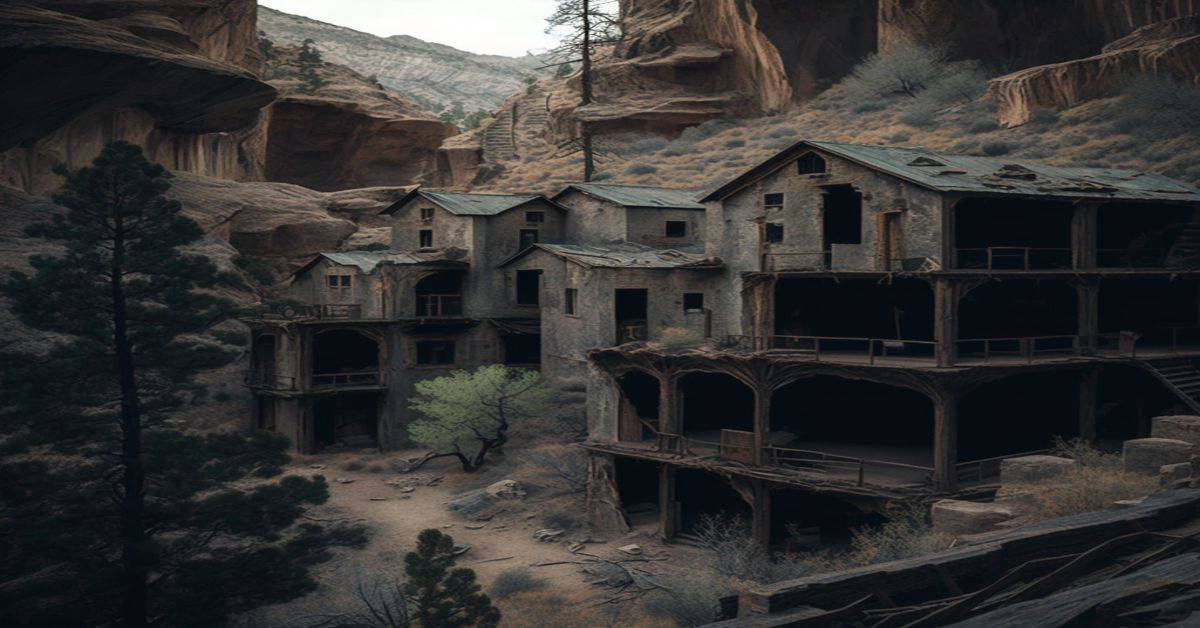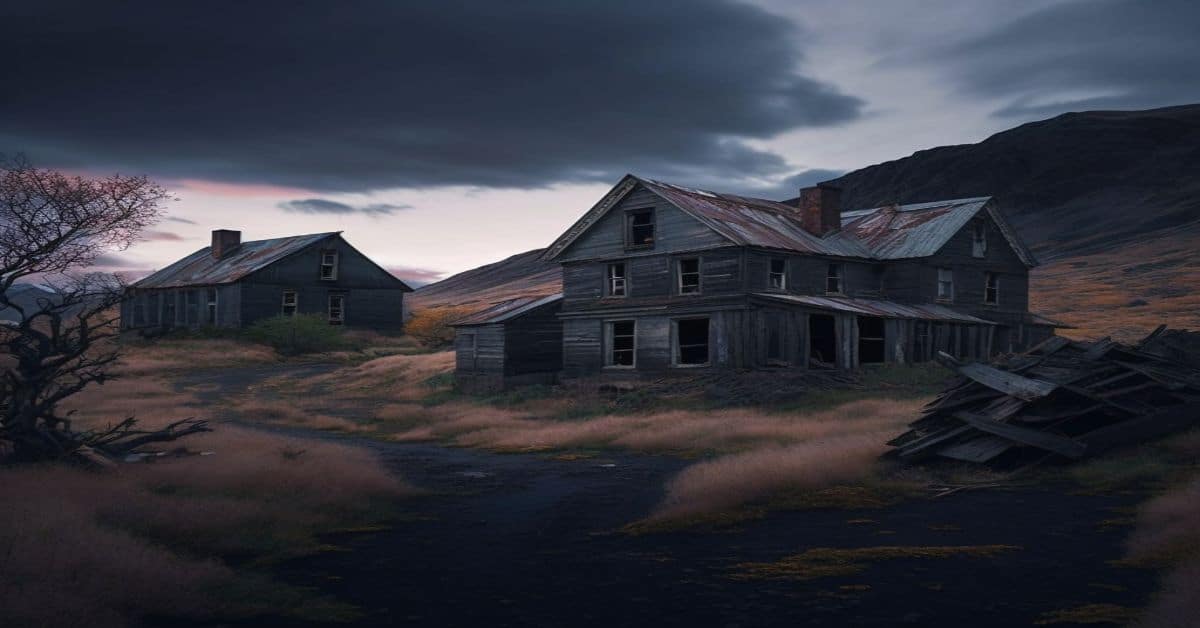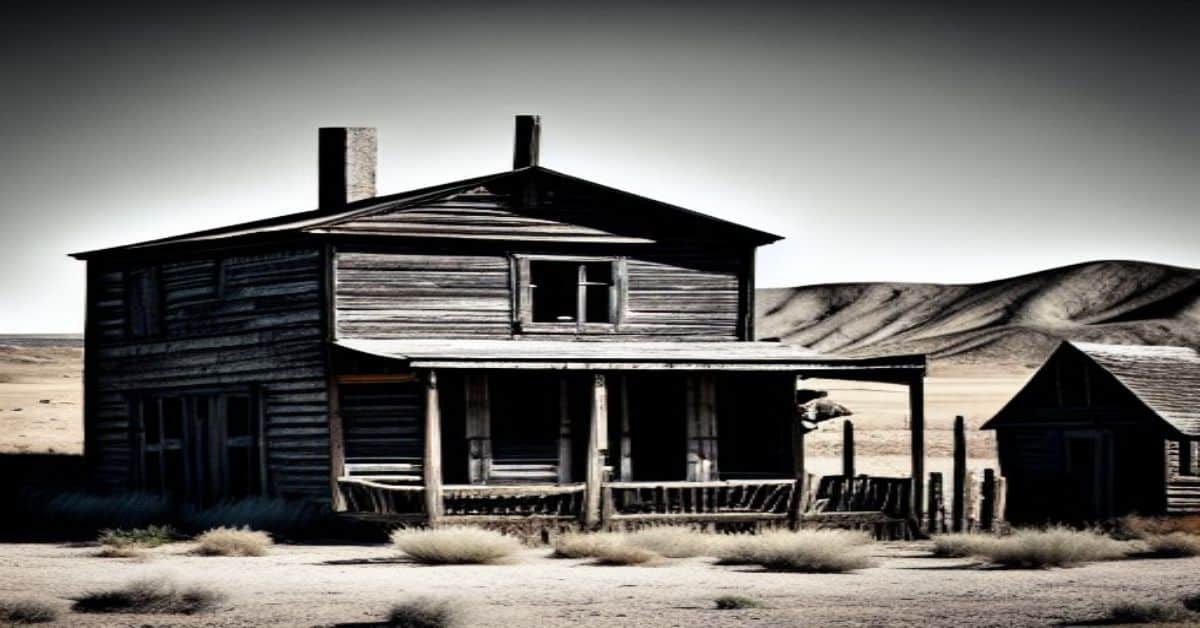Drought Uncovers Utah Ghost Town: A Glimpse into the Past
The ongoing drought in Utah has had some surprising consequences. One such result is the revelation of a long-submerged ghost town, emerging from the depths of a reservoir as water levels drop drastically.
This article will take you on a journey through the history of this Utah ghost town, its significance, and the impact of the drought on the state’s water resources.
Introduction
The persistent drought in Utah has led to declining water levels in reservoirs across the state. This has uncovered lost cars, entire canyons, as well as a hidden gem — the ghost town of Rockport.
The town, which has been submerged since the 1950s, is now visible due to the receding water levels in the Rockport Reservoir, located between Park City and Coalville in Summit County.
The History of Rockport
Established in 1860 by European-American settlers, the area now known as Rockport went through several name changes, including Crandall and Enoch City. The settlers initially built a community, but conflicts with Native Americans led them to construct a rock wall around the settlement for protection.
This earned the town the name “Rock Fort” during the Black Hawk War from 1865 to 1872.
Once the war ended, the settlers tore down the wall and repurposed the materials for other structures in the community. With the fortification gone, the town was renamed Rockport. The population of Rockport remained small throughout its existence, with around 100 to 200 residents living there during its peak.
The Abandonment and Submersion
As the population of Rockport began to decline in the 1940s, the federal government identified the land surrounding the town as the ideal location for a reservoir. 1952 the government purchased the land and began constructing the Wanship Dam to create the Rockport Reservoir.
Prior to the flooding, some of the town’s buildings were removed and preserved for historical purposes. These included the Rockport Coop, the Rockport School House, and a chapel. The remaining structures were submerged by the dam, which was completed between 1954 and 1957.
The Emergence of Rockport
For over 50 years, Rockport remained underwater, with occasional glimpses of the town’s remnants as water levels fluctuated. However, the current drought in Utah has caused a drastic decline in water levels, uncovering the entire ghost town for the first time in decades.
The Rockport Reservoir’s water capacity has dropped to just 26%, revealing foundations, roads, and other traces of the town’s existence. Drone footage captured by Devon Dewey offers an aerial view of the unearthed town, showing the remnants of buildings and streets that once bustled with life.
Exploring the Ghost Town
While the emergence of Rockport has piqued the interest of history enthusiasts and locals alike, park officials advise against visiting the site in person. The ground surrounding the reservoir is still muddy due to years of submersion and poses a risk to visitors who may become stuck or injured.
Instead, drone footage and aerial photography offer a safer and more responsible way to explore the ghost town. Devon Dewey’s drone images provide a unique perspective of the area, showcasing the foundations of old homes and roads that remain visible despite their age and years underwater.
The Significance of Rockport’s Reappearance
While the discovery of the ghost town is fascinating, it also serves as a stark reminder of the severity of the ongoing drought in Utah. The low water levels in the Rockport Reservoir are representative of the state’s water resources, with multiple reservoirs experiencing dangerously low capacities.
The appearance of Rockport not only offers a glimpse into the past but also highlights the pressing need for water conservation and sustainable resource management in the face of drought and climate change.
Drought Conditions in Utah
Utah is currently experiencing severe drought conditions, with some areas classified as being in “exceptional drought.” The drought affects over 2.8 million people in the state, significantly impacting water resources, agriculture, and wildlife.
The National Integrated Drought Information System (NIDIS) reports that nearly 88.1% of Utah is experiencing extreme drought conditions, with one reservoir completely dried out and several others below 30% capacity.
The Impact of Drought on Utah’s Reservoirs
The drought has profoundly impacted Utah’s reservoirs, with many experiencing dangerously low water levels. In addition to the Rockport Reservoir, Lake Powell and Hyrum Reservoir have seen significant declines in water volume.
The low water levels have uncovered lost cars, canyons, and ghost towns like Rockport, serving as a visual reminder of the severity of the drought. As reservoirs continue to suffer from diminished capacities, concerns grow over the state’s water supply and the potential long-term consequences of the drought.
The Future of Rockport and Utah’s Water Resources
The emergence of Rockport has drawn attention to the critical issue of water conservation and resource management in Utah. As the state grapples with the ongoing drought, efforts to preserve and protect water resources become increasingly important.
Utah’s water authorities and state parks are working together to develop strategies for sustainable water use, including water-saving measures, infrastructure improvements, and public education initiatives.
As for Rockport, its future remains uncertain. With fluctuating water levels and the potential for further drought, the ghost town may once again be submerged beneath the reservoir’s waters. For now, it serves as a powerful reminder of the importance of preserving our natural resources and the history that lies beneath them.
Conclusion
The drought in Utah has uncovered a hidden gem in the form of the Rockport ghost town. As fascinating as this discovery may be, it also highlights the pressing need for water conservation and sustainable resource management in the face of climate change and ongoing drought.
The emergence of Rockport serves as a stark reminder of the delicate balance between our past, present, and future, and the responsibility we have to protect and preserve our precious resources.



